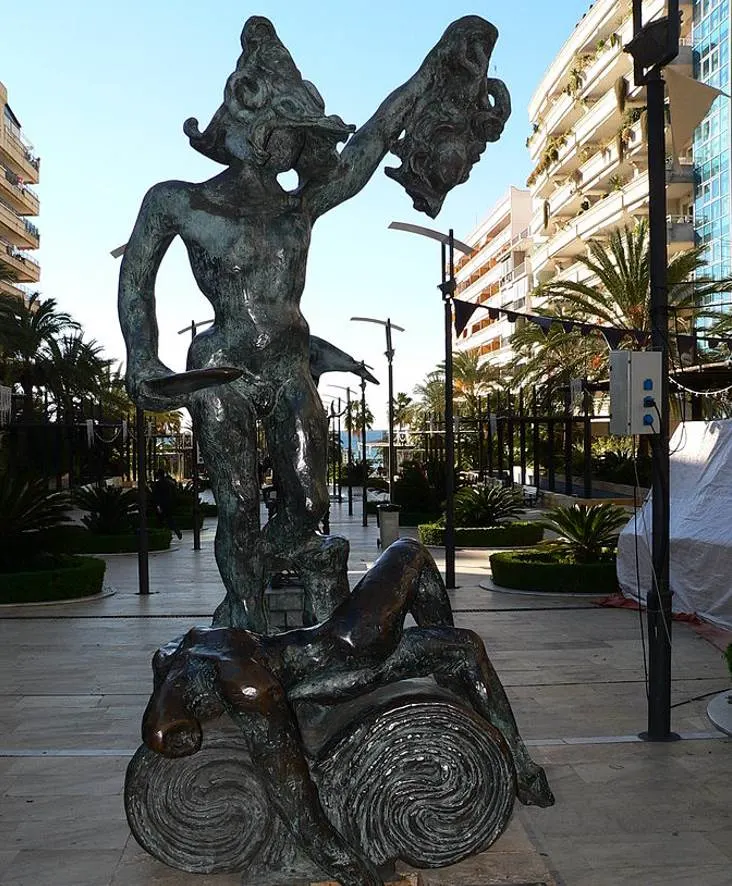If your patron is the Grand Duke of Tuscany and his predecessor had a monumental Renaissance statue dedicated to them, then you better make sure your work can at least hold a candle to the existing statues.
That’s exactly what Benvenuto Cellini (1500-1571) must have thought when he earned a prestigious commission in the 1540s. The renowned Mannerist artist outdid himself and created his most famous work during this period.
Let’s take a closer look at some of the most interesting facts about Perseus with the Head of Medusa by Benvenuto Cellini, one of the most remarkable works of art created during the 16th century.
1. It was commissioned shortly after Cellini came back from France
Benvenuto Cellini is considered to be one of the most renowned artists of his time. He was, however, a very controversial character who got himself into serious trouble more than once during his lifetime.
After spending a couple of years working at the court of King Francis I of France, he got himself into trouble once again and was forced to go back to his hometown of Florence around 1544.
Here, the artist received a great welcome from the ruler of the Florentine Republic at the time, Duke Cosimo I de’ Medici (1519-1574), the second Grand Duke of the Florentine Republic. He is the one who commissioned the statue of Perseus with the Head of Medusa in 1545 to glorify himself as a great ruler.

2. It depicts the mythological story of Perseus beheading a gorgon
According to Greek Mythology, Perseus was the founder of Mycenae and the ruling Perseid Dynasty. He was the son of Zeus and Danaë and to become the ruler, he had to overcome some obstacles.
When he was invited to a banquet, he had to bring a gift. Usually, this was a horse, but since Perseus didn’t own a horse, he asked the man who invited him, Polydectes, to name whatever gift he wanted.
Polydectes was in love with Danaë and to get the cautious Perseus out of the way, he requested the head of the only known mortal gorgon, Medusa. She was a horrible creature with hair made of snakes and was able to turn people to stone just by looking at them.

Perseus found Medusa sleeping in a cave and cut off her head. The statue depicts the moment shortly after this event as blood can be seen spewing from her neck as Perseus stands triumphantly on top of her decapitated body.

3. The statue was a remarkable work of art because of the material used
Benvenuto Cellini didn’t have an easy time creating this remarkable work of art. First of all, he was pressured by Duke Cosimo I de’ Medici because the new ruler saw the statue as a political statement to emphasize his power.
Secondly, it’s made of bronze, a material that hadn’t been used for over half a century to create such a monumental statue.
It wasn’t the only statue in Florence made of bronze because Judith and Holofernes (1457-1464), one of the final sculptures of Donatello, was also cast in bronze but in several pieces put together.
Cellini decided to cast the entire sculpture at once, an extremely complicated endeavor that almost went wrong because his assistants let the metal clot. Luckily, his intervention resulted in a smooth work of art, just like he envisioned it.

4. The Duke’s statue was received much better than that of his predecessor
The Piazza della Signoria in Florence was the political heart of Florence and several monumental artworks were already placed here in the 16th century. Some of these included the Statue of David by Michelangelo and the statue of Hercules and Cacus by Bandinelli.
The Statue of Hercules and Cacus was commissioned by the predecessor of Duke Cosimo I, a man named Duke Alessandro I (1510-1537), and had been ridiculed by the people of Florence after it was unveiled in 1534.
Afraid to suffer a similar reception, Duke Cosimo I cautiously watched the moment that the statue was unveiled from a window at the Palazzo Vecchio. The reaction of the public to Perseus with the Head of Medusa was great, a triumph for the second Duke of the Florentine Republic.
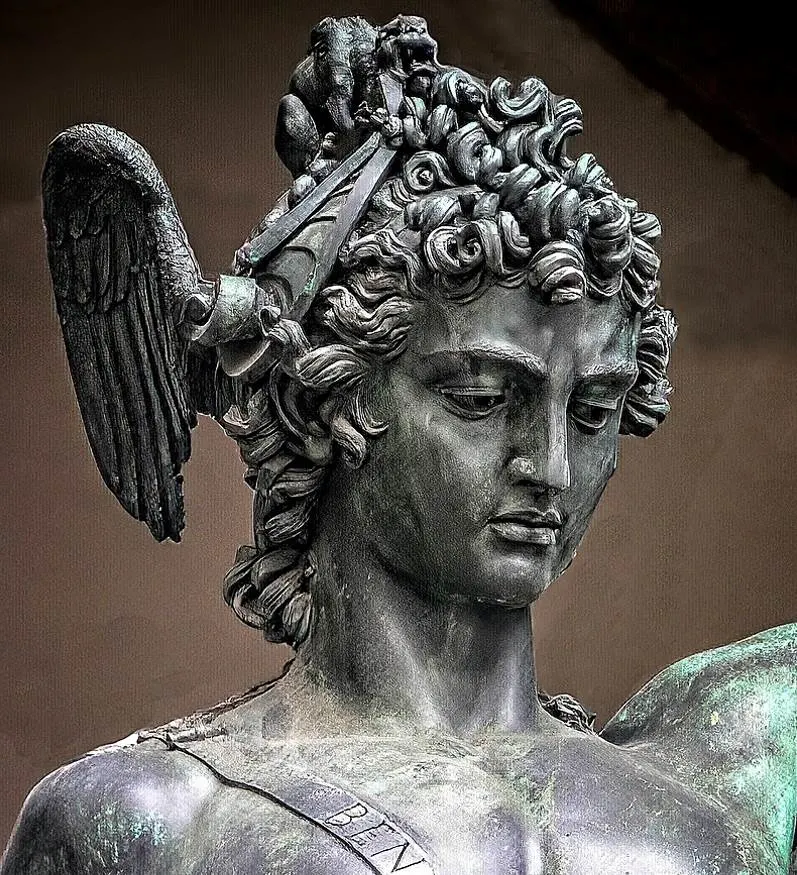
5. The square base of the statue features bronze relief panels
One of the most remarkable features about the statue isn’t just that it stands majestically on top of a square base, but that this base is decorated with bronze relief panels as well.
These reliefs depict the story of Perseus and Andromeda, the daughter of Cepheus, the King of Aethiopia. Perseus saved her from a terrible beast and brought her back to Greece to marry, effectively becoming the Queen.
What’s remarkable is that this relief was only installed later, after the statue was already unveiled. This might mean that it wasn’t Cellini’s original idea to actually integrate this in the base.
The original bronze relief has been removed from the actual statue and can now be found at the Bargello Museum in Florence.
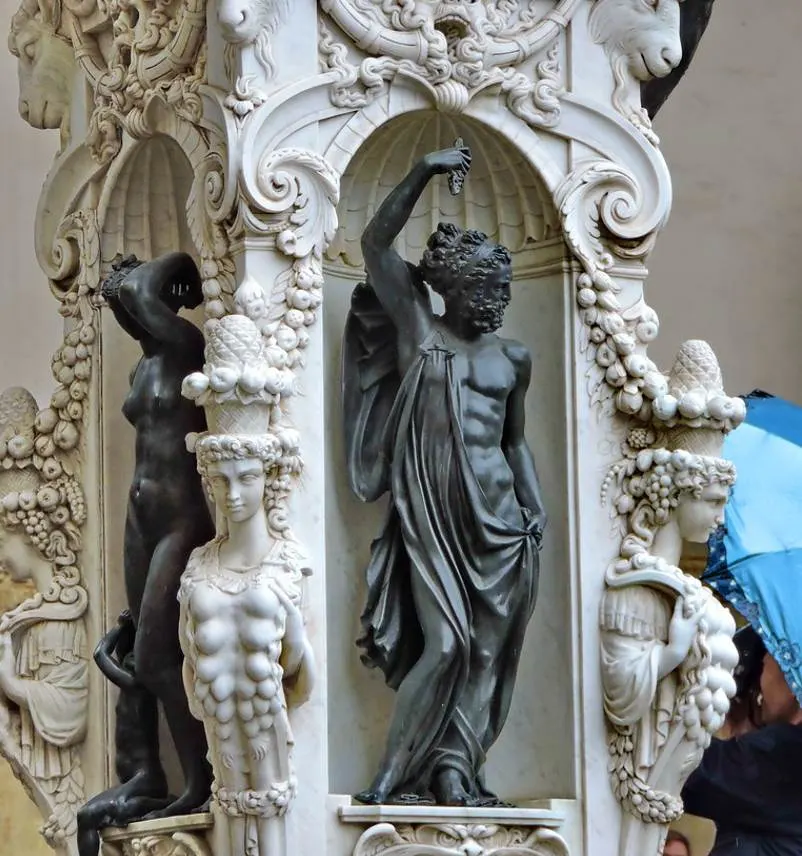
6. How big is Perseus with the head of Medusa?
Because the main idea of the statue was to make a political statement for the relatively new ruler of the Florentine Republic, Duke Cosimo I de’ Medici, the statue was created at a monumental scale.
With the base included, the statue stands 519 centimeters (204.33 inches) tall. This also makes it slightly taller than the Statue of David by Michelangelo which stands 517 centimeters (17 feet) tall.
Yes, Cellini really wanted to outdo every other sculpture that stood in the Piazza della Signoria already!
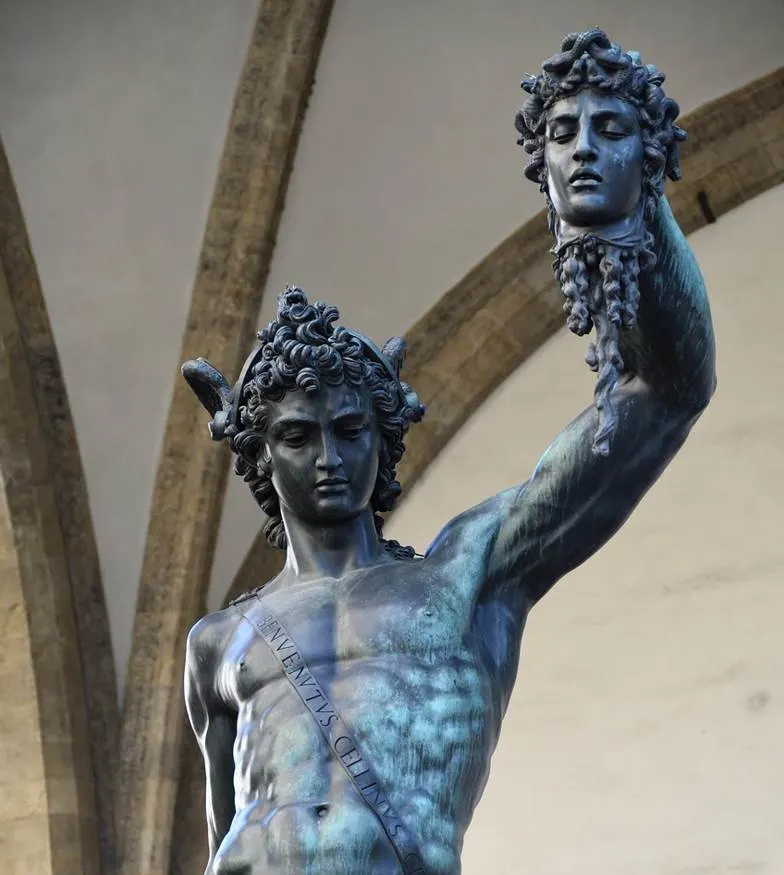
7. Where is the statue located?
The Piazza della Signoria is the historical heart of the Florentine Republic and remains the political heart of the City of Florence today. The most prominent building at the square is the Palazzo Vecchio, the town hall of Florence.
Right next to this remarkable building in the heart of the city there’s a building called the “Loggia dei Lanzi,” a covered gallery featuring arches that today serves as an open-air art gallery.
Cellini’s Perseus with the Head of Medusa dominates the left bay of this relatively small structure. It’s full of amazing sculptures created by some of the most renowned artists in history.
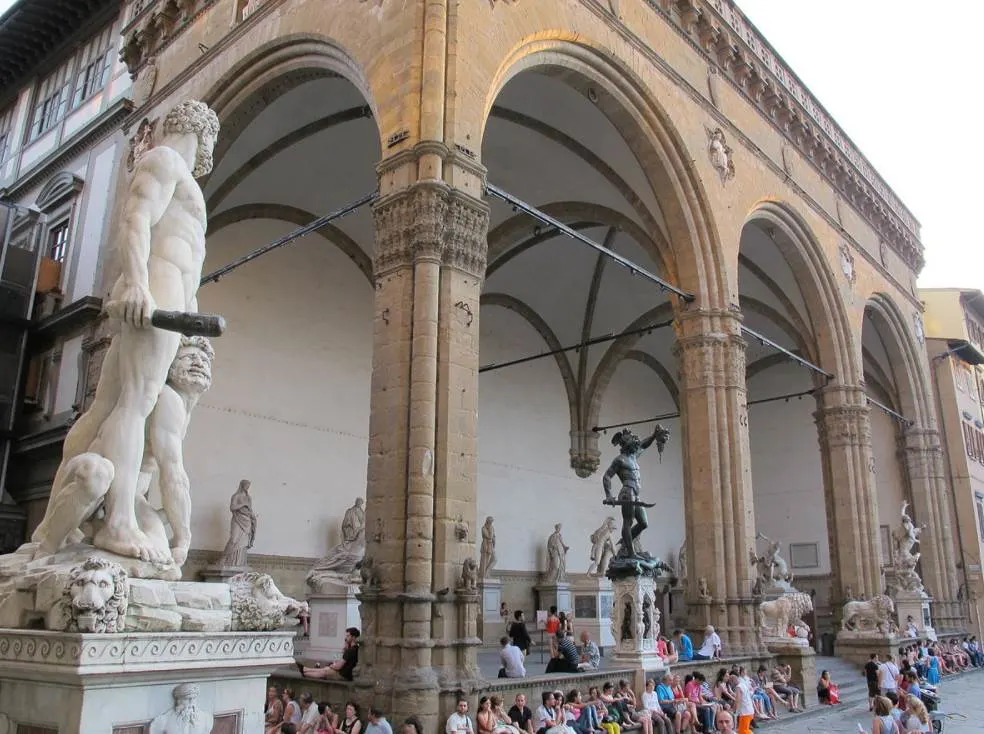
8. There are a large number of similar statues all around the world
The story of Perseus killing Medusa has been a popular subject in art for countless centuries, starting way back in ancient Greece and Rome. The way that Cellini depicted Perseus while holding the head of the gorgon has been found on frescoes in ancient Roman villas.
More recently, Antonio Canova (1757-1822) created 2 similar-looking versions, one on display in the Vatican Museums and one in the Metropolitan Museum of Art in New York City.
An equally surprising sculpture with this theme is a work created by Salvador Dalí. This work can be found in the Avenida del Mar in Marbella, Spain.
